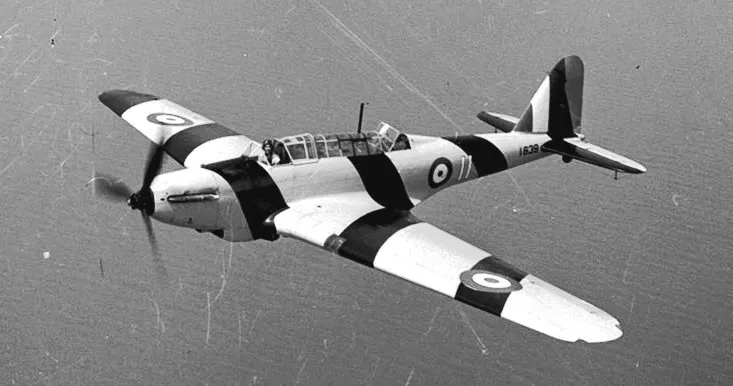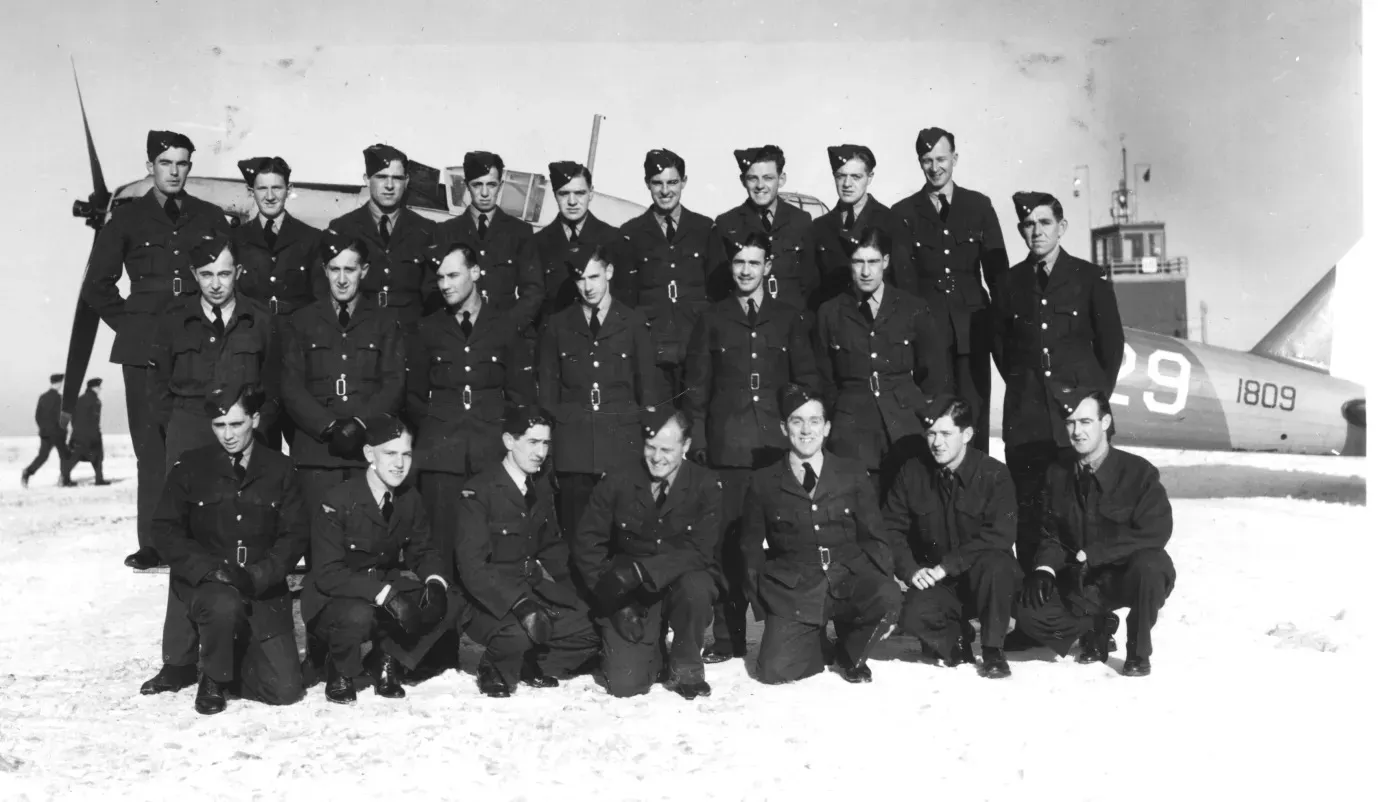Jones, Frederick William (Corporal)
Killed in Flying Accident 1944-January-29


Birth Date: 1924
Born:
Parents: Son of Mr. and Mrs. S. S. Jones, of Riddings, Derbyshire, England.
Spouse:
Home:
Enlistment:
Enlistment Date: unkown date
Service
RAFVR
Unit
9 BGS- Bombing & Gunnery School
Base
Mont Joli, Quebec, Canada
Rank
Corporal
Position
Service Numbers
1581509
Crew or Other Personnel
Battle R7441
Battle serial: R7441

Fairey Battle, RCAF (Serial No. 1639), wearing target towing stripes, used in bombing and gunnery training, July 1941.
The Fairey Battle is a British designed single engine light bomber, used as a trainer in the RCAF. The Battle was powered by the same high-performance Rolls-Royce Merlin piston engine that powered various contemporary British fighters including the Spitfire. It was, however significantly heavier, with its three-man crew and bomb load. Although it was a great improvement over the aircraft that preceded it, the Battle was relatively slow and limited in range. It was only armed with two .303 in machine guns facing the rear, and was found to be highly vulnerable to enemy fighters and anti-aircraft fire.
The Fairey Battle participated in direct combat missions during early stages of the Second World War and earned the distinction of attaining the first aerial victory of an RAF aircraft in the war. In May 1940 the Battle suffered heavy losses, frequently in excess of 50 percent of aircraft sortied per mission. By the end of 1940 the type had been entirely withdrawn from active combat service, and was relegated to training units overseas, with many serving in Canada.
The RCAF received its first batch of eight Battles in August 1939, at RCAF Station Borden, Ontario. A total of 802 Battles were eventually delivered from England, serving in various roles and configurations, including dual-control trainers, target-tugs, and gunnery trainers for the Bombing and Gunnery schools of the Commonwealth Air Training Plan. Canadian use of the Battle declined as more advanced aircraft, such as the Bristol Bolingbroke and the North American Harvard were introduced. Battles remained in RCAF service until shortly after the end of the war hostilities in 1945. No. 111, 115 and No. 122 Squadrons of the RCAF flew Battles.
Fairey Battles were not manufactured in Canada, but they were assembled, serviced and modified here, including the installation of turrets at the Canadian Car and Foundry plant in Montreal. Harold Skaarup web page with revisions
Aircraft Images
Battle R7441
Battle Mk. I / IT R7441
Built as a trainer, delivered new to Canada. TOS 9 December 1940 at Fleet Aircraft, Fort Erie. Winter conversion kit installed during erection at Fleet. To No. 1 Training Command on 31 December 1940, for use by No. 31 Service Flying Training School at Kingston, Ontario. Category C10 damage at Kingston at 01:50 on 24 January 1941, overshot night landing into ditch at Kingston. Category B damage at Kingston aerodrome at 18:55 on 4 June 1941, caught fire in air; force landed, Kingston. To No. 6 Repair Depot, Trenton on 9 August 1941. Transferred from RAF account to JATP account on 3 December 1941, still at No. 6 Repair Depot. To Canada Car & Foundry Turcot works on 8 December 1941, for installation of turret. Back to No. 6 Repair Depot on 7 August 1942, as a Mk. IT. To No. 3 Training Command on same date, for use by No. 9 Bombing & Gunnery School at Mont Joli, Quebec, delivered there on 2 October 1942. One crew member killed at Mont Joli, Quebec on 29 January 1944. Student gunner A/Cpl F.W. Jones, RAF became caught between seat and turret ring while attempting to transfer from turret to fuselage, asphyxiated. No damage to aircraft. Severely damaged in gear up landing at Mont Joli, with engine on fire, on 13 November 1944. Pilot Pilot Officer Vanasse suffered facial burns, but assisted students in exiting aircraft. Aircraft declared Category A write-off. Ownership of wreckage to No. 1 Air Command on 15 January 1945. SOS 6 March 1945.1940-12-09 Taken on Strength Fleet Aircraft 2019-08-20
1941-January-24 Accident: 31 Service Flying Training School Loc: Kingston Airport Names: Ames
1941-June-04 Accident: 31 Service Flying Training School Loc: Aerodrome Names: Fisher
1944-January-29 Accident: 9 Bomb & Gunnery School Loc: Between St Luce Quebec & Main Aerodrome Names: Brent | Conway | Jones
1945-03-06 Struck off Strength Written off at No. 9 B&GS 2019-08-20
Unit Desciption
9 BGS (9 Bomb and Gunnery School)
The Bombing and Gunnery School (B&GS) offered instruction in the techniques of bomb aiming and aerial machine gunnery to Air Observers, Bomb Aimers, and Wireless Air Gunners. These schools required large areas to accommodate their bombing and gunnery ranges, and were often located near water. The Avro Anson, Fairey Battle, Bristol Bolingbroke, and Westland Lysander were the standard aircraft used at B&GS schools.
RCAF.info - RCAF Station Mont Joli QC